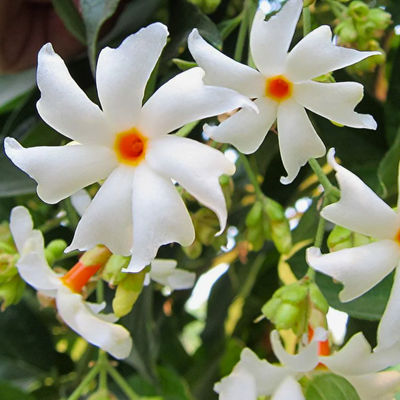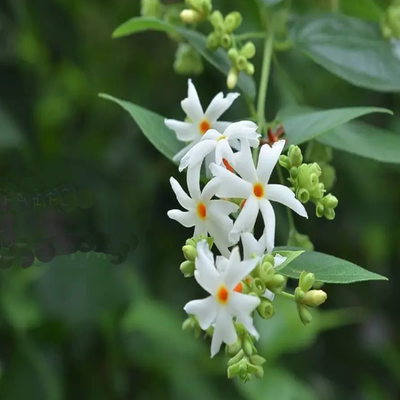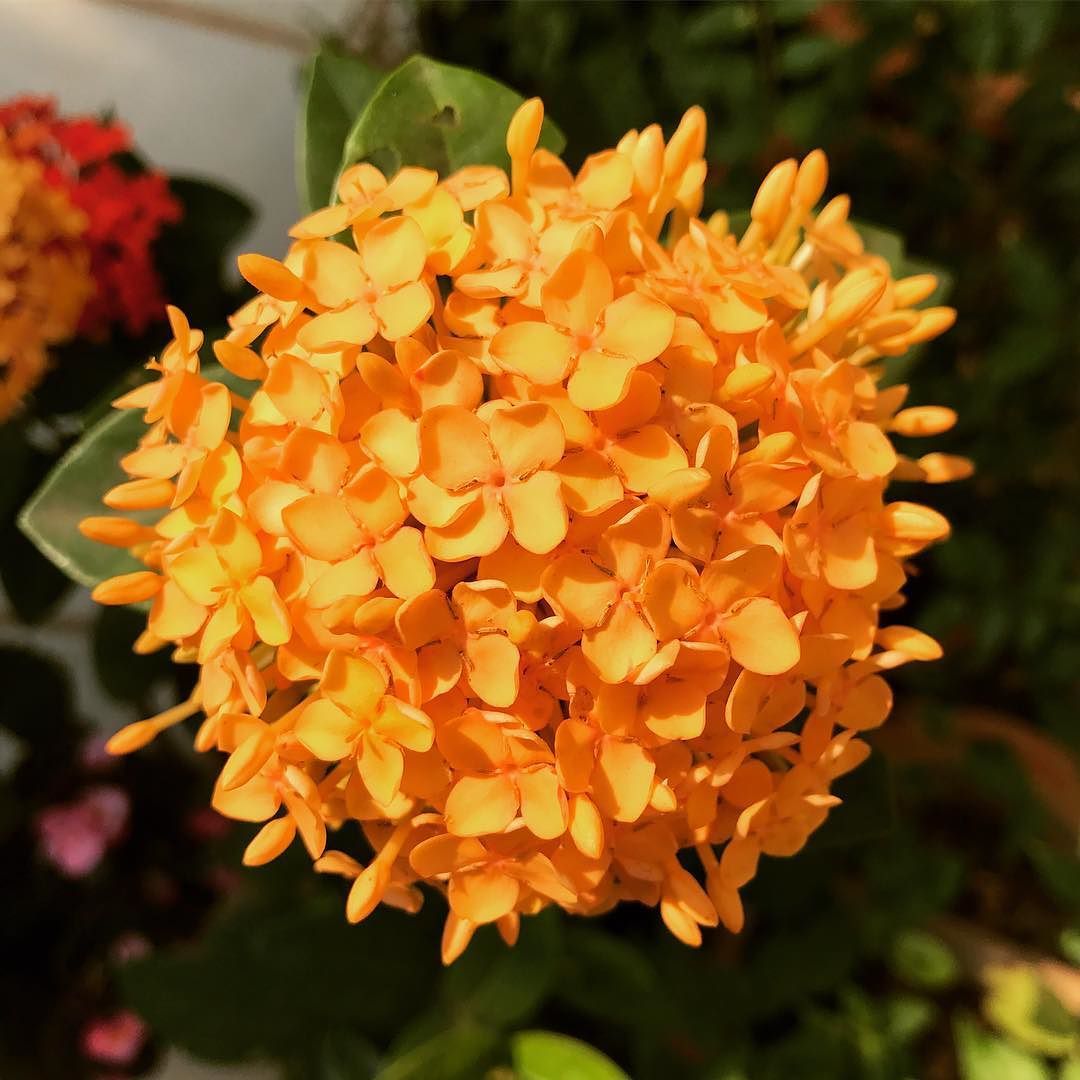
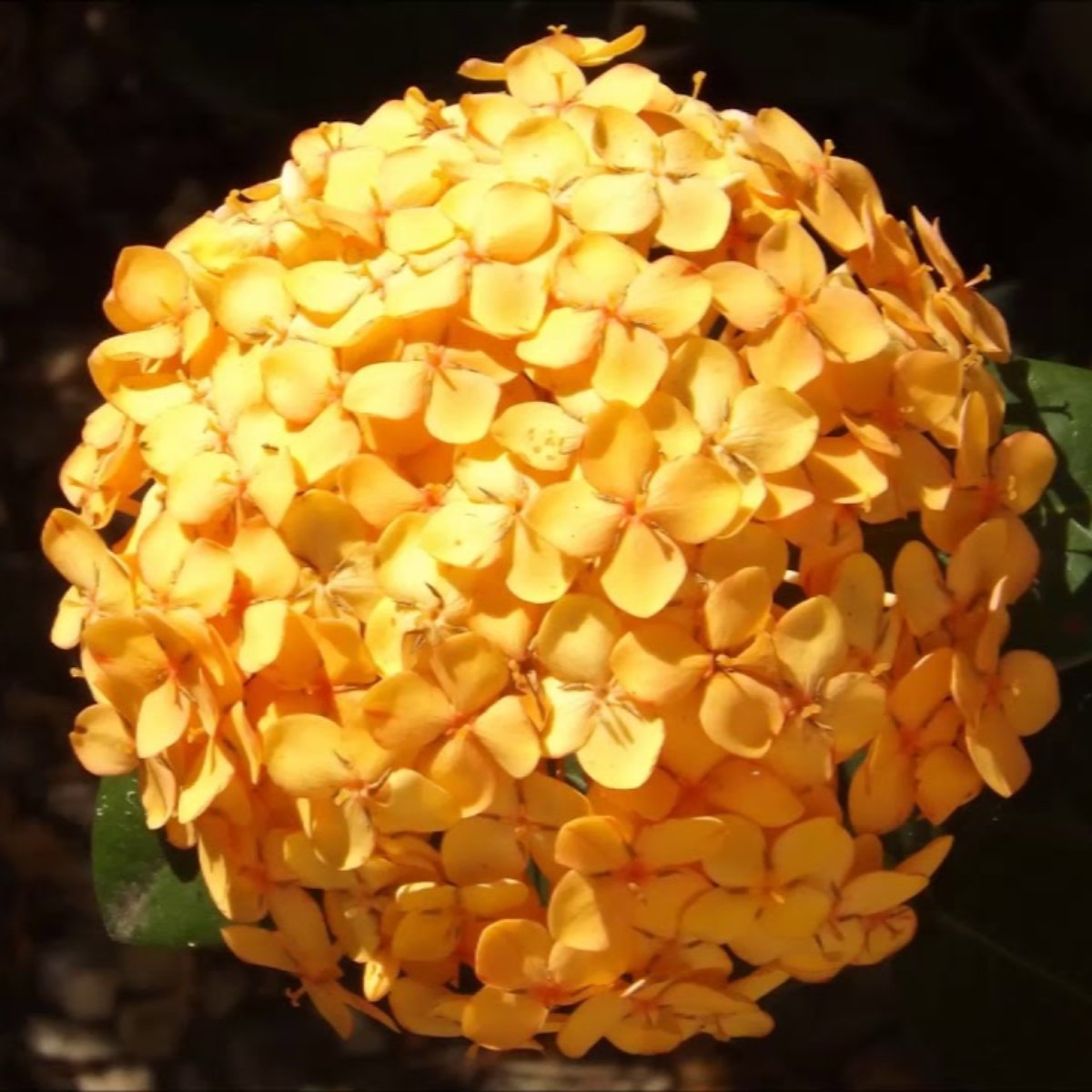
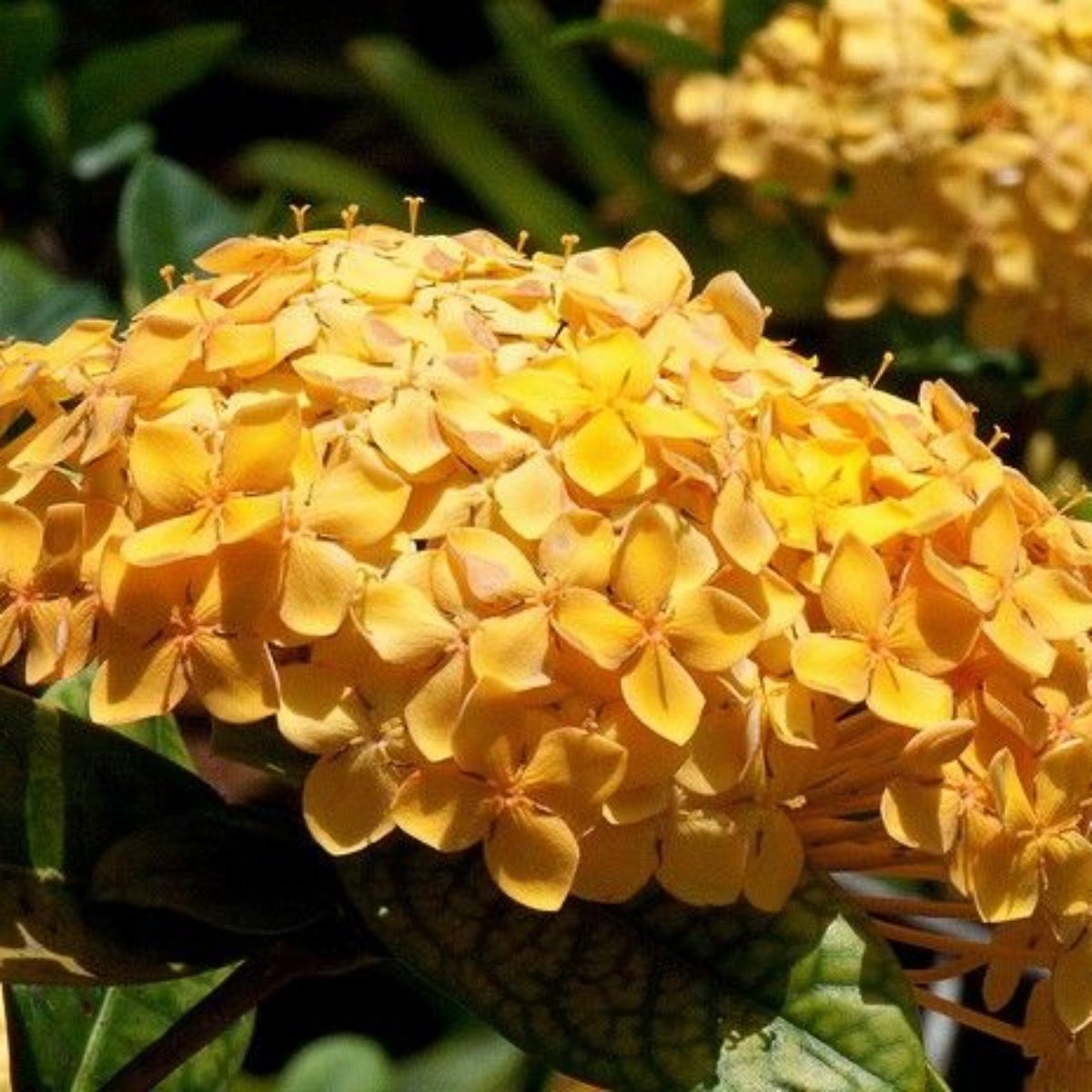

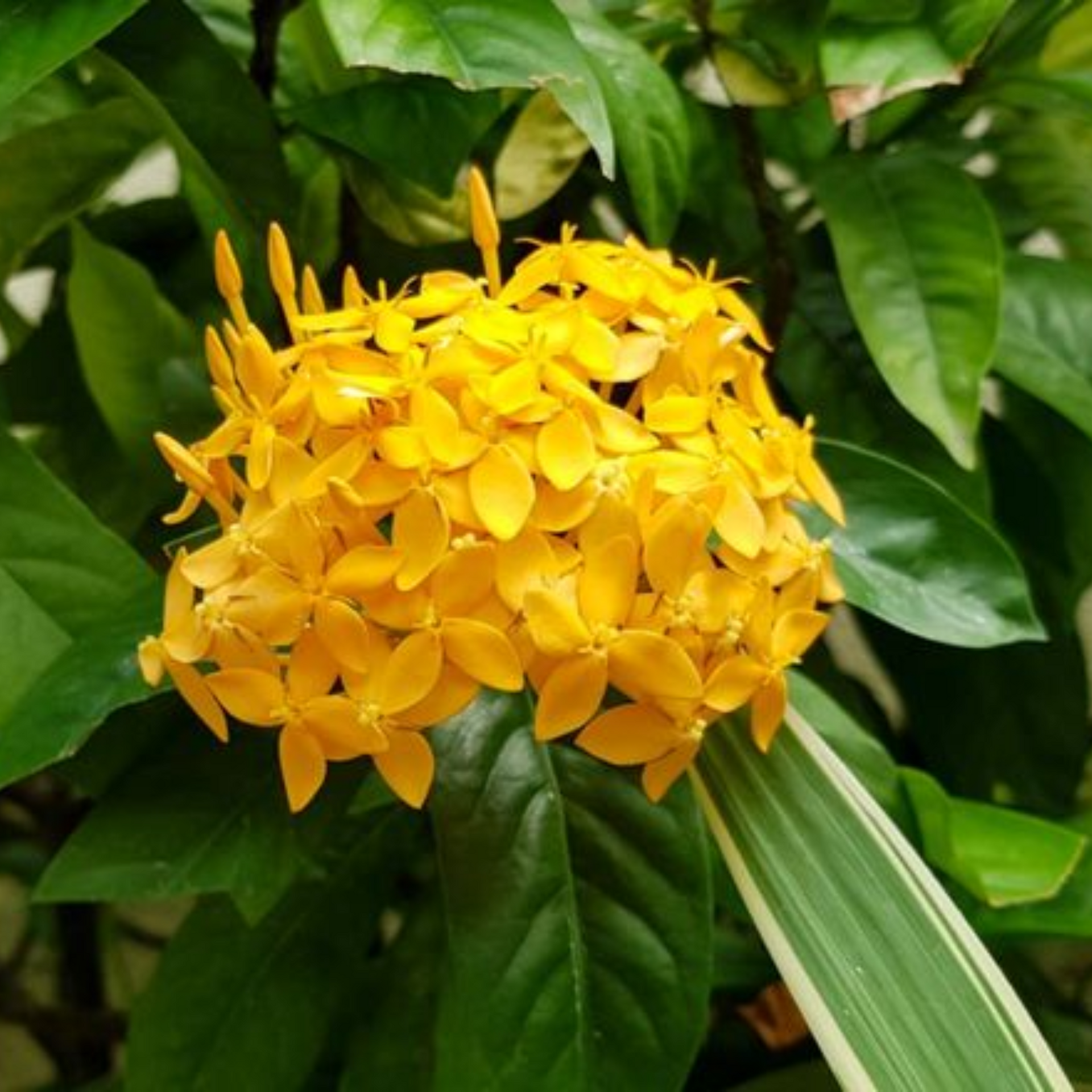
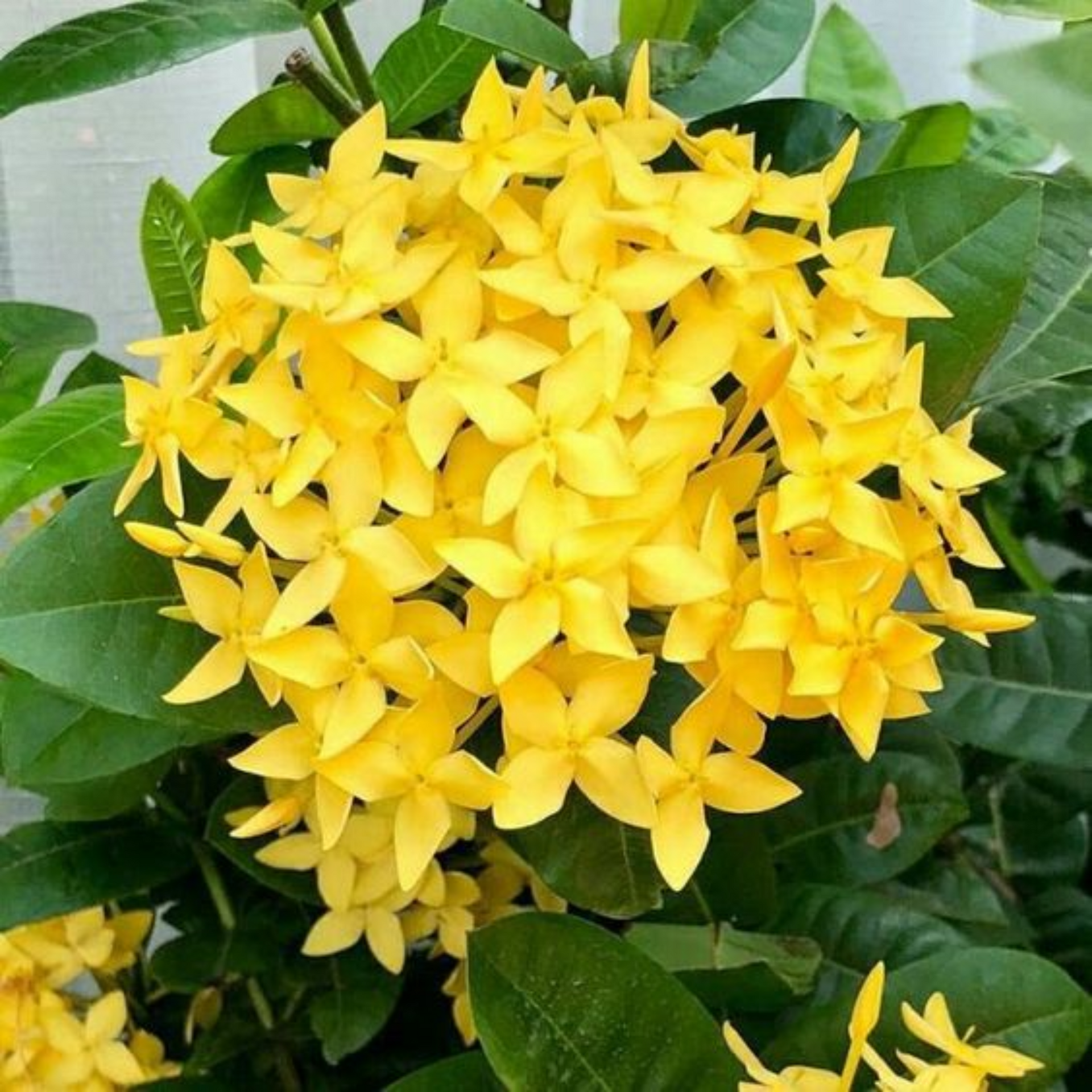
Ixora Yellow New Compact Flowering Ixora Plant With Beautiful Flowers
Guaranteed Safe Checkout
Unveiling the Sunshine Shrub: All About
the Yellow Ixora Plant From Green
Paradise
The world of gardening is a vibrant tapestry of colors and forms, with each plant bringing its unique charm to the tableau. Among these botanical wonders, the Yellow Ixora stands as a testament to nature's artistic prowess. Its vivid yellow blooms and lush green leaves paint a picturesque sight that can turn any garden into a paradise of sunshine. In this article, we delve into the enchanting world of the Yellow Ixora, exploring its origins, characteristics, cultivation tips, and the sheer joy it brings to gardens around the world.
The Origins of Yellow Ixora
- The Yellow Ixora, scientifically known as Ixora chinensis, belongs to the Rubiaceae family.
- This family is known for its diverse range of tropical and subtropical plants, and the Yellow Ixora is no exception.
- It is native to Asia, specifically found in countries like India, Sri Lanka, and Malaysia, where it thrives in warm and humid climates.
- Its striking appearance has made it a popular choice for gardens worldwide.
A Sunshine Burst in Your Garden
- The Yellow Ixora is renowned for its striking appearance.
- The most captivating feature of this plant is, of course, its radiant yellow flowers.
- These flowers form dense clusters, creating a burst of sunshine in your garden.
- Each individual flower is small, tubular, and has four petals, but when they come together, they create a stunning display that can brighten up even the dullest of days.
- The leaves of the Yellow Ixora are equally appealing.
- They are deep green, glossy, and elliptical in shape.
- Their vibrant color provides a lovely contrast to the yellow blooms, making this plant a true eye-catcher.
Cultivation Tips for Yellow Ixora
Cultivating a Yellow Ixora in your garden can be a rewarding experience, but it does require some care and attention to thrive.
Here are some essential tips for growing this stunning plant:
Sunlight:
Yellow Ixoras love sunlight. Ensure they receive at least 6-8 hours of direct sunlight every day. Placing them in a spot with partial shade during scorching summers can help protect them from intense heat.
Soil:
These plants prefer well-draining, acidic to slightly alkaline soil. Amending your garden soil with organic matter like compost can enhance its fertility and drainage.
Watering:
Yellow Ixoras enjoy consistently moist soil, but they don't like to sit in waterlogged conditions. Water them on a daily basis to maintain the soil equally moist but not saturated.
Pruning:
Prune your Yellow Ixora to maintain its shape and encourage new growth. After the flowering season has ended, prune the tree.
Fertilizing:
Feed your Yellow Ixora with a balanced, slow-release fertilizer during the growing season (spring and summer). This will promote healthy foliage and abundant blooms.
Pests and Diseases:
Keep an eye out for common garden pests like aphids and scale insects. If you notice any infestations, treat them promptly with appropriate measures. Yellow Ixoras are generally hardy and not prone to many diseases.
Symbolism and Cultural Significance
- Beyond its aesthetic appeal, the Yellow Ixora carries cultural significance in various regions.
- In India, it is often associated with Hindu rituals and is considered an auspicious plant.
- In Malaysia, it is used in traditional medicine for its supposed healing properties.
Cultivating Sunshine: A Guide to Growing Yellow Ixora
Plants
When it comes to adding vibrant splashes of color to your garden or landscape, few plants can rival the beauty of the yellow Ixora. Known for its stunning clusters of bright yellow flowers and glossy green leaves, this tropical beauty is a favorite among garden enthusiasts. If you're looking to bring a touch of the tropics to your own backyard, here's a comprehensive guide on how to grow and care for the yellow Ixora plant.
Getting to Know the Yellow Ixora
Before diving into the cultivation process, let's acquaint ourselves with this captivating plant.
Scientific Name: Ixora chinensis
Common Names: Yellow Ixora, Chinese Ixora, Flame of the Woods
Origin: Native to Southeast Asia
USDA Hardiness Zones: 10-11
Mature Height: 4-6 feet
Bloom Time: Spring and throughout the year in warm climates
Sunlight: Full sun to partial shade
Soil: Well-draining, slightly acidic soil
Selecting the Right Location
Yellow Ixora thrives in warm, tropical climates, making it an excellent choice for gardens in zones 10 and 11. When choosing a spot for your Ixora, consider the following:
Sunlight:
Ixora plants love sunlight. .They thrive in full sun but may also take light shade. However, for optimal flowering, aim for at least 6 hours of direct sunlight per day.
Soil:
Ensure your soil is well-draining and slightly acidic. You can amend your soil with organic matter like compost to improve drainage and acidity levels.
Planting Your Yellow Ixora
Once you've found the perfect location, it's time to get your hands dirty:
Dig a Hole:
Dig a hole twice the width of the root ball of your Ixora plant. The depth should be equivalent to the root ball's height.
Remove the Plant from its Pot:
Gently remove the plant from its container, being careful not to damage the roots.
Planting:
Place the Ixora in the hole and fill it with soil. To settle the dirt and remove air pockets, thoroughly water it.
Spacing:
Space multiple Ixora plants at least 3-4 feet apart to allow for proper growth.
Watering and Fertilizing
Proper watering and fertilization are key to a healthy yellow Ixora:
Watering:
Ixora prefers consistently moist soil but should not be waterlogged. Water deeply when the top inch of soil appears dry.
Fertilization:
Feed your Ixora with a balanced, slow-release fertilizer during the growing season (spring and summer). Make careful to follow the fertilizer package's recommended dosage.
Pruning and Maintenance
Regular pruning helps maintain the shape and encourage more blooms:
Deadheading:
Remove spent flowers to promote new blooms and maintain a tidy appearance.
Pruning:
In late winter or early spring, give your Ixora a light pruning to remove any leggy growth and maintain its shape.
Mulching:
Apply a layer of mulch around the base of the plant to help retain soil moisture and deter weeds.
Pests and Diseases
- While relatively low-maintenance, Ixora can sometimes be susceptible to pests like aphids, mealybugs, and scale insects.
- Keep an eye out for signs of infestation and treat them as soon as possible using insecticidal soap or neem oil.
Overwintering
- In cooler climates, yellow Ixora can be grown in containers and brought indoors during the winter months.
- Place it in a sunny spot and reduce watering slightly during this time.
Final Thoughts
- The yellow Ixora is a stunning addition to any garden or landscape.
- Its vibrant yellow blooms and glossy green foliage can brighten up even the dullest of spaces.
- By providing the right growing conditions, regular care, and a little bit of love, you can enjoy the beauty of this tropical gem right in your own backyard.
- So, roll up your sleeves, get your gardening tools ready, and watch your yellow Ixora flourish into a dazzling centerpiece of your outdoor oasis.

















